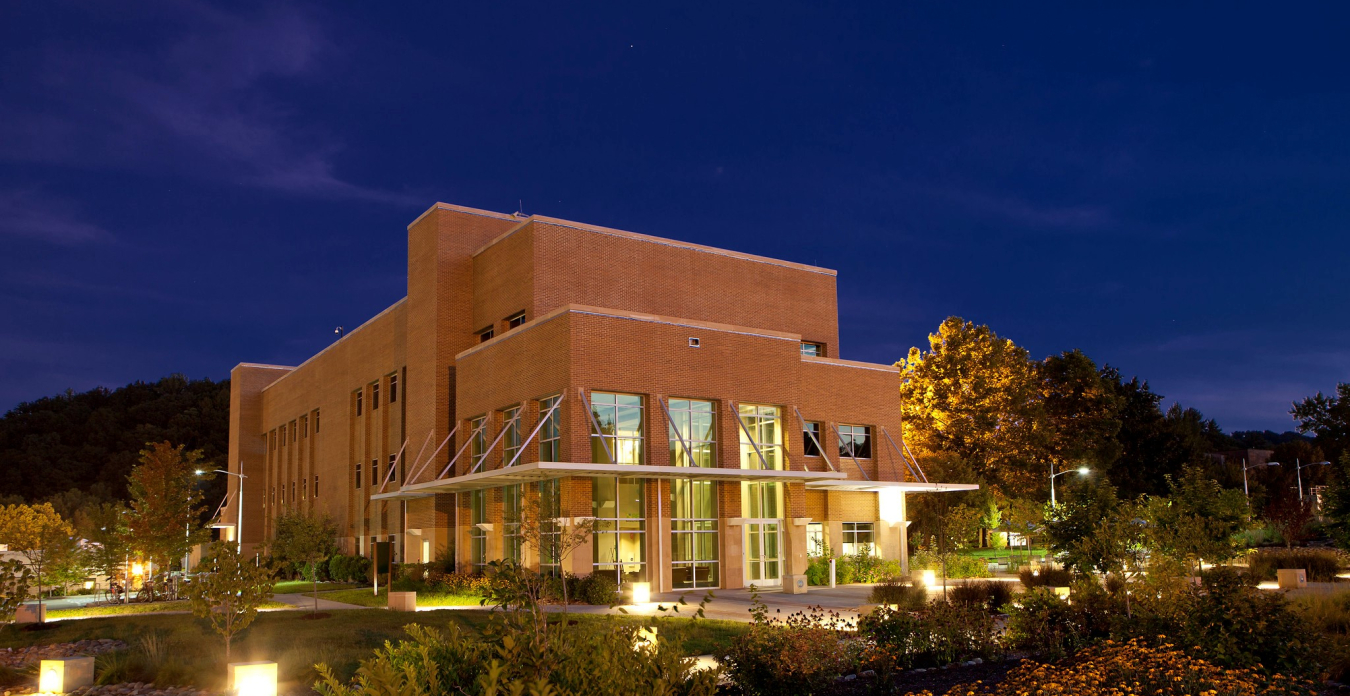
Building Orientation
Effective daylighting starts with good orientation, and building orientation also influences power production, solar heat gain, and other features affecting energy use. For classrooms and most other spaces, the vertical facades that provide daylighting should be oriented within 15° (maximum 30°) of either north or south. East and west glass is problematic from a solar heat gain perspective, is difficult to shade, and can provide non-uniform daylighting.
Orientation is less important if toplighting is used as the primary daylighting pattern, since skylights are insensitive to orientation and roof monitors can be rotated on the roof to achieve a north or south orientation. When positioning the building on the site, make sure that the daylighting apertures are not shaded by adjacent buildings, trees, or elements of the building itself, such as self shading. Also consider ambient noise levels when selecting the type of daylighting system.
Fenestration
The amount of glazing relative to wall area and floor area affects daylight harvesting as well as solar heat gain. Climate zone, daylighting system, fenestration and ceiling height, shading, the need for views, and other aspects of design all work together to create a successful daylighting scheme.
Cool Roofs and Outdoor Surface Reflectance
Exterior surfaces, depending on their material and color, can influence heat gain and daylighting in a building. Consider the reflecting properties of roof materials, sidewalks, and other surfaces that are in close proximity, or part of the building. The use of lighter colors can increase daylighting intensity and, in some cases, reduce the glass area needed for roof monitors or clerestory windows. However, surface colors and façade design should be considered seriously, as some design configurations may cause unwanted reflections and glare.
Shading
An essential component of any good daylight building is to limit direct sunlight from entering. Use strategies that bounce, redirect, and filter sunlight so that direct radiation does not directly enter space for any significant period of time.
Limiting direct solar penetration into the space can be achieved through proper orientation as well as shading, filtering, baffling, and/or reflecting solar radiation at each daylighting aperture.
The success of daylit buildings also depends on how occupants interact with the daylighting system. This is particularly true for blinds or shades that are available for adjustment. Occupants are motivated to close the blinds but not to reopen them, and they tend to adjust blinds for the long term. If blinds are left closed, the daylighting potential will not be realized. If temporary darkening of a specific space is not functionally required, do not install shades or blinds on the daylighting glass. Unnecessary blinds will result in reduced performance, increased first costs, and higher long-term maintenance expenses.
Interior Finishes
The color of the ceiling, walls, floor, and furniture have a major impact on the effectiveness of the daylighting and electric lighting strategy. When considering finish surfaces, install light colors to ensure that daylight is reflected throughout the space.
Consider a ceiling tile or surface that has a high reflectivity. Make sure that the ceiling tile light reflectance includes the fissures within the acoustical tiles, as these irregularities affect the amount of light absorbed. Do not assume that the color of a tile alone dictates its reflectance. When selecting a tile, specify a minimum reflectivity. Most manufactures will list the reflectance as if it were the paint color reflectance.
Thermal Insulation
Continuous thermal insulation is the backbone of a zero energy building’s envelope. High insulation values in the roof, the walls, and below grade are typically needed. This allows the design team to reduce the capacity of the HVAC system and save on first costs as well as long-term operating costs.
Ideal insulation types and values will differ by climate, but for most buildings, continuous exterior insulation is the recommended method to reduce thermal bridging. In cavity walls, open-cell sprayed polyurethane foam or dense-packed cellulose are recommended in addition. Batt insulation is not recommended in wall cavities.
Continuous exterior insulation is also ideal for below-grade walls. Rigid extruded polystyrene board is suitable for this application. While interior insulation of below-grade walls has been common in the past, continuous exterior insulation limits moisture management issues, makes air-barrier and insulation continuity easier, and better accommodates the use of thermal mass for energy efficiency.

